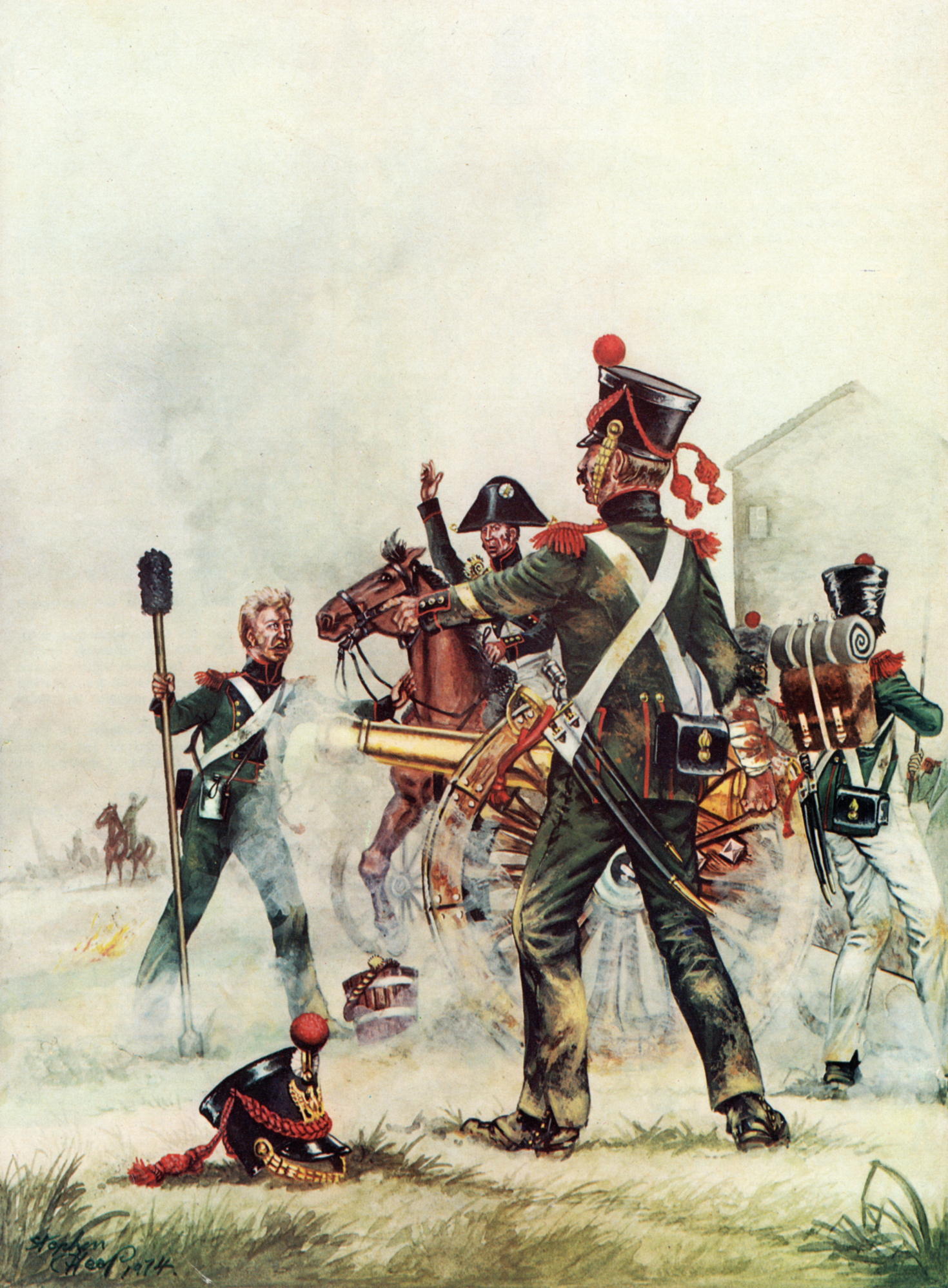Create an Amazon Wedding Registry

Create an Amazon Business Account
Napoleonic Artillery Uniforms
Military Modelling, November 1975
No. 3 Polish Foot Artillery c.1810
By Stephen Heap

THE Polish foot artillery wore the same style of uniform as the Polish infantry; the jacket was very similar to the Polish lancer's "Kurtka", but with slightly longer tails and was dark green with black collars, cuffs, cuff-patches and lapels, all piped red.
The tumbacks were dark green, piped red, all buttons were brass for the other ranks, red fringed epaulettes were also worn.
Legwear could be either long green trousers for winter, or white trousers for summer wear.
The shako was of French design, fitted with the white Polish cockade, the pom-pom and plume were red as were the shake cords and tassels etc.
The front of the shako was decorated with a brass Polish eagle.
Officers wore a French style "habit" coat, again in dark green, with the cut-away lapels, collar, cuffs, cuff-patches and long turn-backs all in black, piped red.
The waistcoat and breeches were white, and black top boots could be worn, but for campaign, officers could also wear long trousers or overalls in either green or white, similar to the men.
Officers‘ headwear could be either a black bicorn, worn side-ways and fitted with the white cockade, which was held in place by a gilt cockade strap, or they could wear a shako, like the men, fitted with gold cords and tassels etc.
Officers’ marks of rank were in the form of gold epaulettes, as in the French army.
The officers carried a sword in a black leather scabbard with brass fittings; the sword knot was gold and officers’ buttons were gilt.
The equipment of N.C.O.s and men was as follows: a cow-hide pack, a black leather pouch, fitted with a brass grenade, a short sabre with a red knot attached, and a bayonet and musket; haversacks and canteens etc., were of many varieties and types.
The overcoat was grey and could be fitted with the red epaulettes. N.C.O.s were identified by slanting chevrons above each cuff: one yellow chevron above each cuff for 1st class gunners, two yellow chevrons for bombardiers, one gold chevron for sergeants and two gold chevrons for sergeant-majors.
All belts, straps etc., were in white leather.
The colour plate shows, from left to right, gunner, mounted officer, sergeant and gunners.
The line drawings illustrate two officers, the one on the left is in campaign dress, all c.1810.
Source: pp. 670-671, Military Modelling, November 1975.
Other 19th Century Illustrations of Costume & Soldiers




